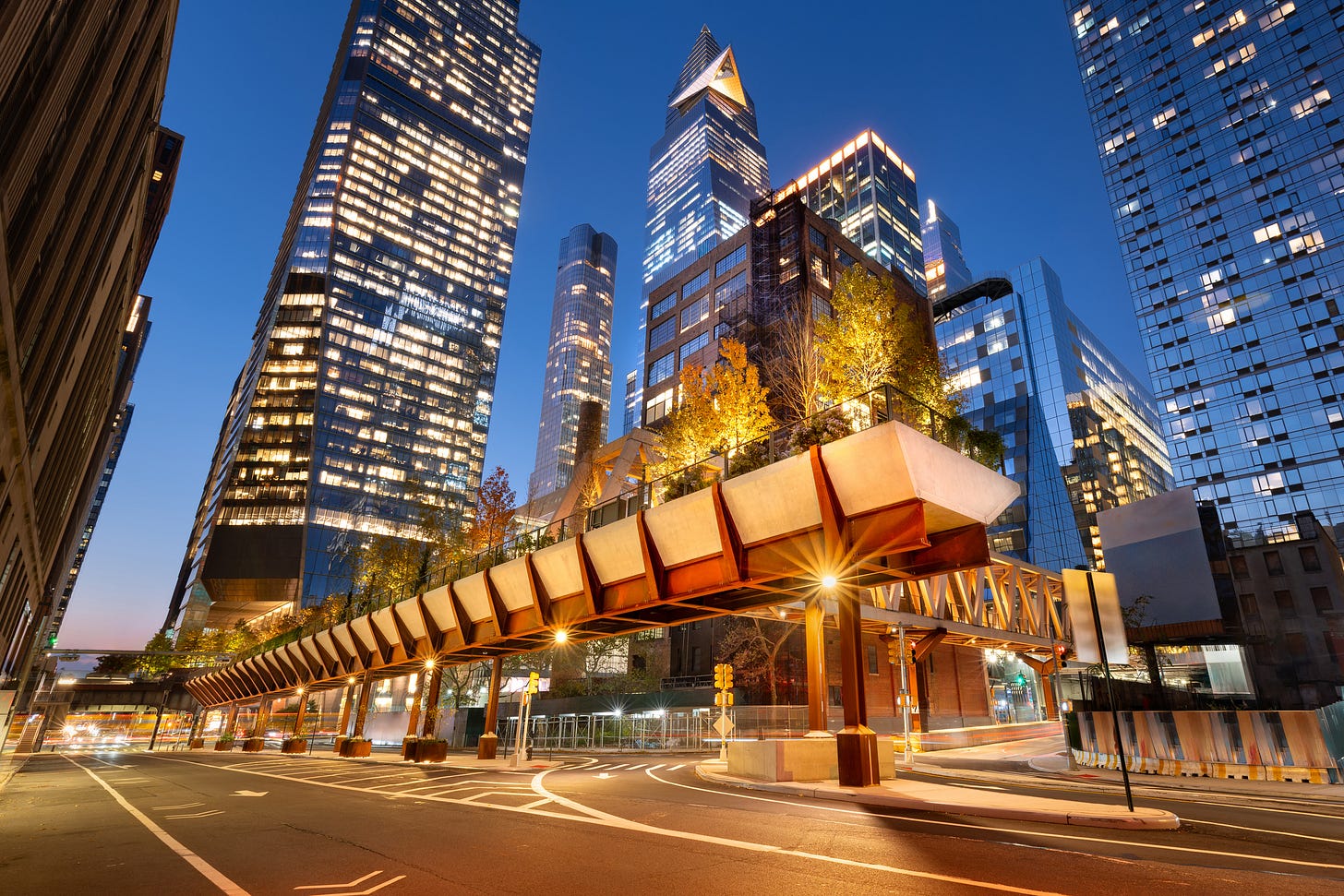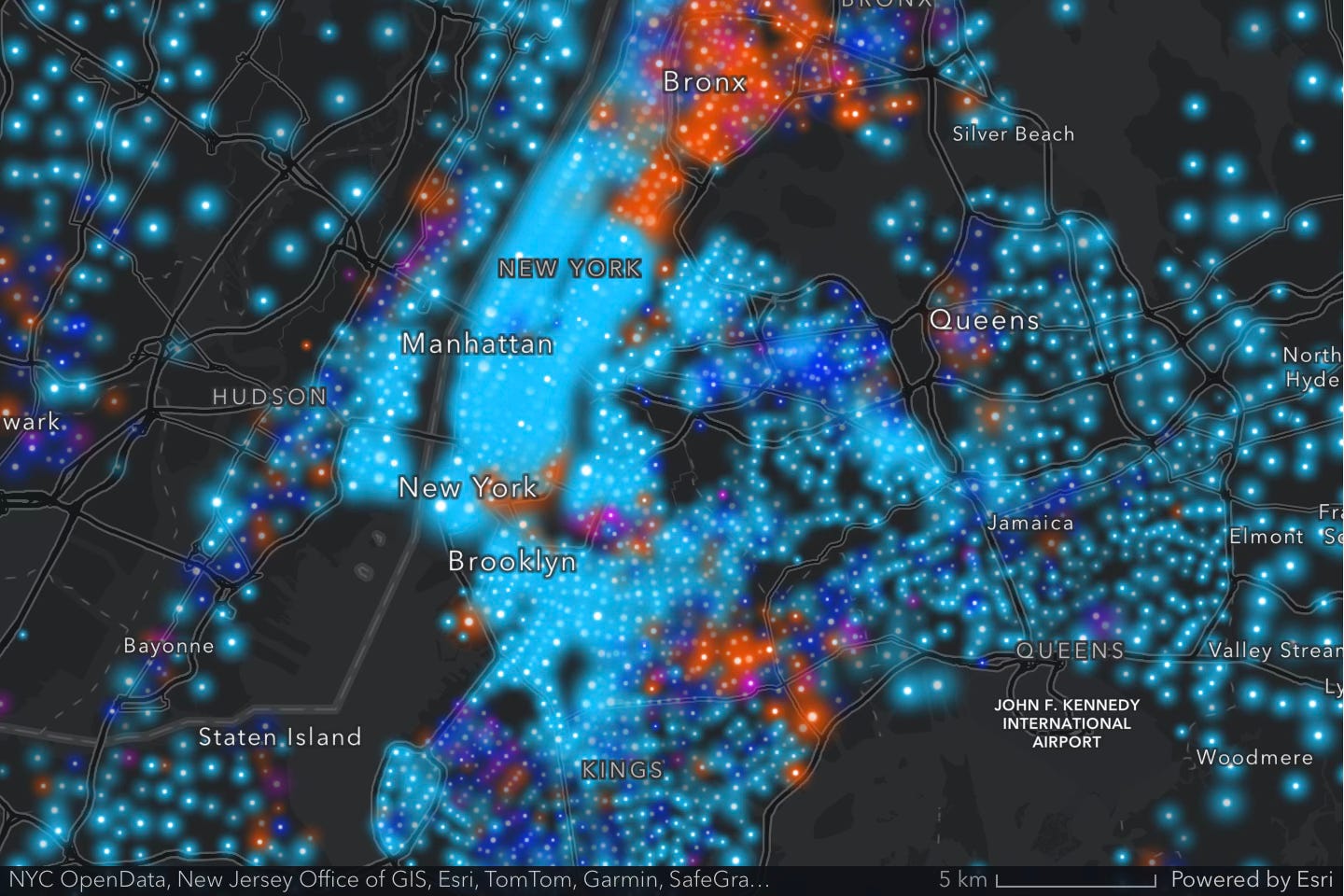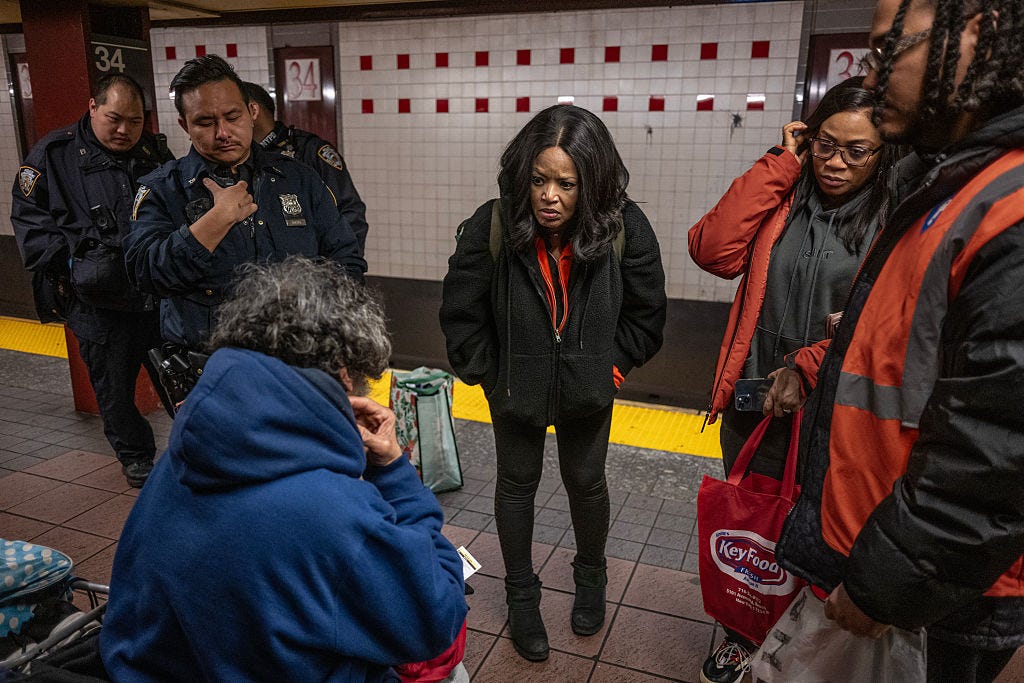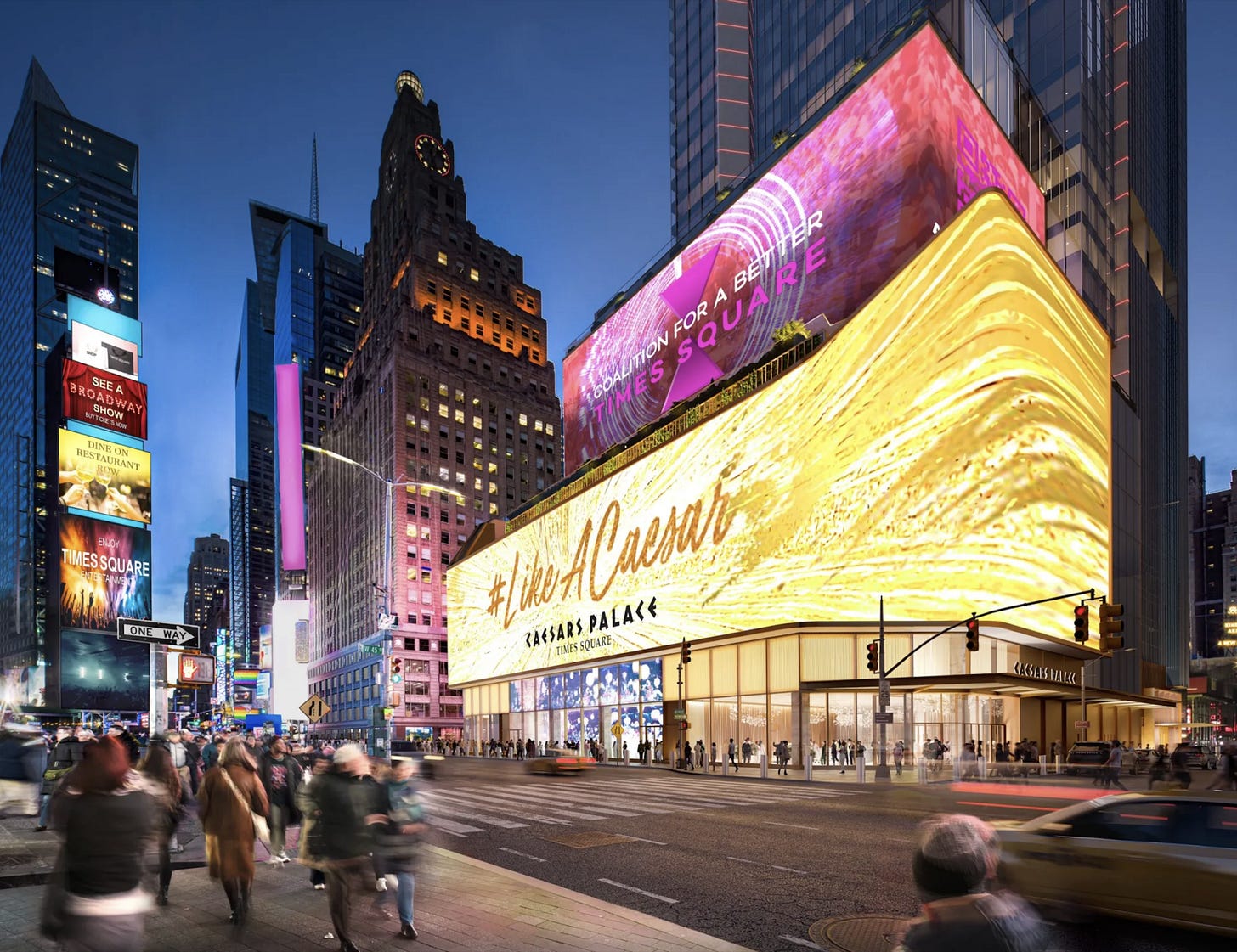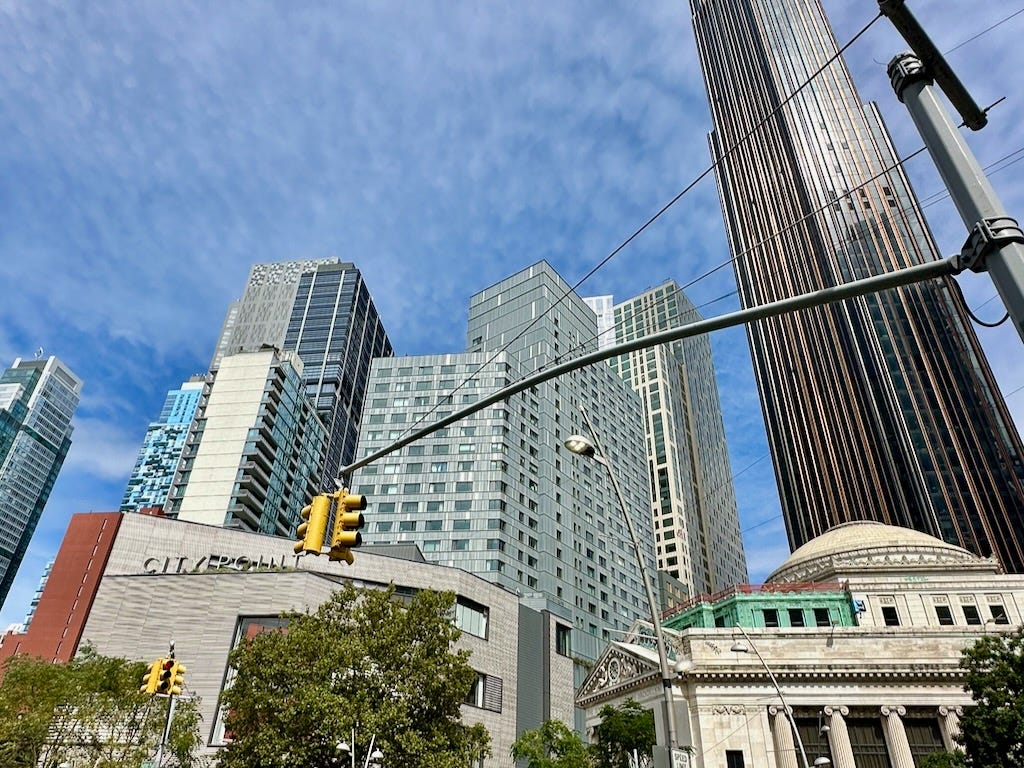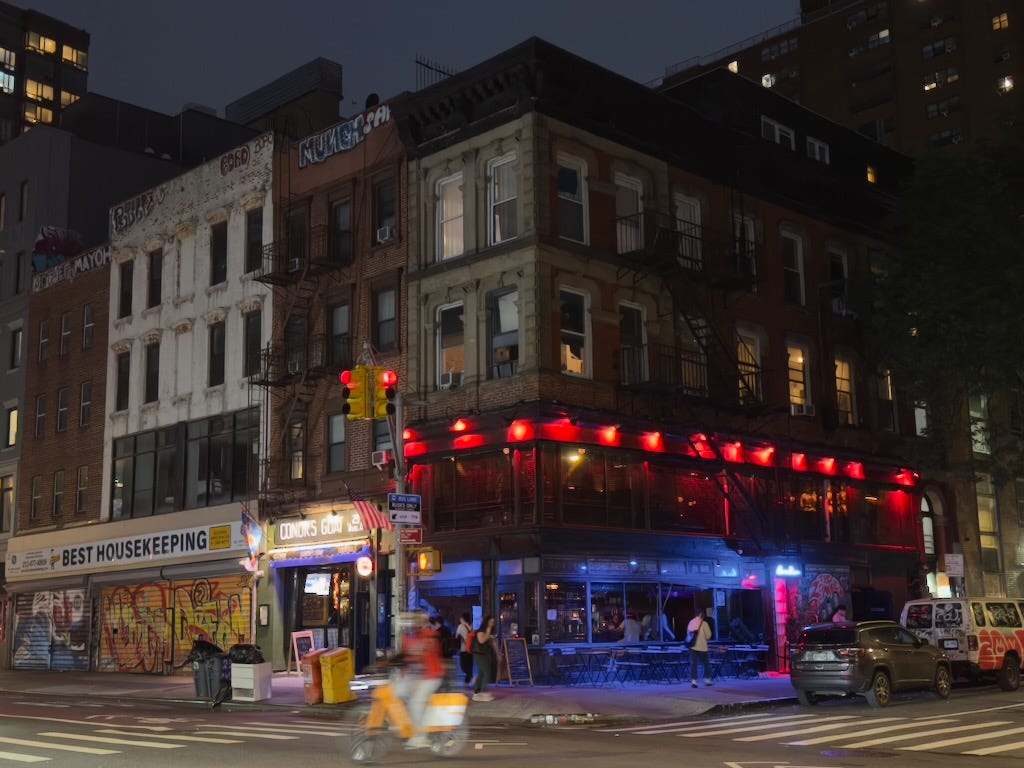Wealth, Poverty and Gambling
Can Mamdani charm New York’s elites?
Former Mayor Bill de Blasio was in a reflective mood last week when he stopped by the New York Editorial Board. He told us he had approached the “wealthy and powerful” with too much hostility when he took office in 2014: “I clearly had a chip on my shoulder and I probably would’ve been well advised to push some of that down and try to offer an open hand,” he said.
De Blasio was talking to the group (Nicole Gelinas and I are members) about Zohran Mamdani’s demeanor, and his good cheer even toward the people most skeptical of him — and the ones whose taxes he plans to raise the most. The former mayor seemed to think that might help the socialist escape some of the hostility from Manhattan elites who despised de Blasio.
“I had this conversation over the years — real estate folks, Wall Street folks — and they basically said, ‘If you say nice things to them, they’ll be cool and they can even work with some of your policies they disagree with’. I think Zohran has figured that out.”
Mamdani has been meeting with business leaders across the sectors, and by all accounts seems comfortable in these rooms. But the devil is in the details, and Mamdani’s campaign promises are broad. The extent to which his “desire for partnership” and “belief in the possibility of this city” will find common ground with that of the elites and the broader business community will depend on who will be in his administration to deliver on his vision, one that depends significantly on income redistribution.
Democrats on the left always say they’re confident the rich won’t just leave in the face of tax hikes. It may be true that the rich are less likely to move than middle-income residents — but in a city that depends on its 1% for almost half of its personal income tax revenues, the stakes are high. As the Manhattan Institute’s John Ketcham wrote in 2023, “as remote work allows for city salaries without the hefty rent payment, and as other cities offer a richer and wider mix of amenities,” New York can no longer rest on its laurels as “the city of choice for high-earning professionals.”
And their choices don’t just affect the tax base, but also the people their companies employ, and the non-profits their contributions support.
Campaign Update
Candidates spent Rosh Hashanah courting Jewish voters. Zohran Mamdani, the progressive frontrunner, is trying to square a circle: standing by his calls to divest from Israel bonds and his allegations of genocide, while reassuring congregants that he’ll protect their rights in New York. His holiday message promised that “every New Yorker should be safe and cherished by the city they love,” but the question remains how many Jewish voters believe him.
Mamdani also insists he is serious about law and order—though in 2020 he declared, “We don’t need an investigation to know that the N.Y.P.D. is racist, anti-queer and a major threat to public safety.” He now tells reporters that he should apologize for those words, blaming the heat of the moment.
While Jim Walden endorsed Andrew Cuomo yesterday, the anti-Mamdani vote remains, for now, fatally divided. So Mamdani will have to focus on what he’s up against come January: Trump budget cuts, unease over public safety, and responsibility for the Department of Education, a subject on which he’s been loudly quiet.
School Savings
Both Curtis Sliwa, the Republican nominee, and Mamdani would look for cuts at the Department of Education; should cuts become necessary, they told the Times. Cuomo was evasive.
No Endorsement
Meanwhile, Hakeem Jeffries, the House minority leader, and Chuck Schumer, the Senate minority leader, both from Brooklyn, have yet to endorse the party’s nominee for mayor, Mamdani.
Schumer and Jeffries’ hesitation makes them look weak to Democrats who wonder why party leaders can’t simply back the nominee chosen by over a million primary voters, the progressive journalist Ross Barkan writes for Crain’s.
One sticking point is Israel: both are staunchly pro-Israel, while Mamdani is openly pro-Palestine and has even said he’d arrest Netanyahu if he visited New York. Both also face personal risks: DSA could target Jeffries in his Brooklyn base — Mamdani won his district, and Schumer could draw a left-wing challenger, like AOC, who’s much more popular, in 2028.
Datapoint: Mapping Wealth & Poverty
Esri’s Storymaps team has been mapping incomes to explore wealth and poverty in NYC, Detroit, Chicago, Philadelphia, and Houston. The interactive maps visualize income data by income predominance, income extremes, and income diversity at the Census tract level, using the 2020 Census data.
In this map, the red tracts represent the predominant income brackets of under $25,000; the purple tracts represent $25,000 - $50,000; the dark blue tracts represent $50,000 - $100,000; and the light blue tracts represent over $100,000. If you click on the image, you’ll get to the rest of the maps and more details on how to read them.
Long Read: “Treated and Streeted”
An in-depth Streetsblog investigation shows how, despite New York City’s $30+ billion social safety net, the system repeatedly fails mentally ill homeless individuals using the subway.
With responsibility splintered across multiple agencies—DHS outreach, police, EMTs, hospital staff, MTA personnel—coordination breaks down. People in psychiatric crisis can linger on platforms for hours; hospitals often stabilize them briefly and discharge them back into the system, a cycle dubbed “treated and streeted.”
The city is experimenting with “co-response” teams — nurses paired with police (PATH) or MTA officers (SCOUT) — dispatched directly into subway stations to streamline emergency removal and transport. Early results show 1,006 transports from October 2023 through July 2025 (about half involuntary), but the teams cover only a fraction of stations. Scaling the model would cost roughly $100 million annually, and many criticize it as a reactive patch on a deeply fractured system.
Read more about how we got here, what has been tried, and the Sisyphean task at hand.
No Gambling With NYC
Manhattan’s community advisory committees just delivered a rare rebuke to Albany’s political and development class by rejecting all three casino proposals for Manhattan — Times Square, Hudson Yards, and the East River — despite millions in lobbying, glossy renderings, and promises of jobs, parks, and “community benefits.”
In communities with political and economic clout, casinos are seen as nuisance uses—like highways or power plants—that bring more harm than benefit, Nicole Gelinas writes in a piece published today in City Journal. Promises of jobs, parks, or “community benefits” rang hollow to the residents compared to the social costs of addiction, petty crime, and diversion of spending away from local businesses.
Casinos rarely deliver on revenue pledges, and are more symbols of desperation than opportunity, she observes. This reality has been borne out upstate, where casinos approved nearly a decade ago under Andrew Cuomo’s development push have consistently fallen short of their own revenue projections, even requiring local bailouts.
Unlike projects Manhattan has foisted on outer boroughs in the past, rejected casinos don’t need to land elsewhere, Gelinas argues. New York’s neighborhoods already attracting investment—from Coney Island to Willets Point to Throggs Neck—can afford the self-confidence to say no.
Extra, Extra!
Bland Towers: Downtown Brooklyn’s skyline boom has yielded more bulk than beauty — Curbed argues that instead of bold architecture, the rezoning produced a forest of bland glass towers with little street life, a missed chance to create a truly distinctive urban center, giving us ‘“the Olive Garden of New York real estate” instead.
Anxious Affluents: During the primary, Mamdani overwhelmingly won the votes of young, high-earning voters — NYT asked four of them, “Why?” For most, it came down to worries and uncertainty about their own financial stability.
Zoning Hurdles: MI’s Eric Kober argues in City Journal that outdated manufacturing zoning still blocks housing growth in New York, and while the city’s new industrial plan would open some areas to residential use, political and procedural hurdles remain.
Still, the carefully redrawn maps mark a milestone in the city’s long retreat from manufacturing zones. New York’s dire housing needs should preclude leaving land in high-value communities underused and blighted. Zoning needs to be flexible and responsive to changing conditions. The city’s planners deserve recognition for their efforts to move toward that goal.
School Priorities: NYC Schools Chancellor Melissa Aviles-Ramos discussed the new reading curriculum, the statewide cellphone ban, and the need to preserve mayoral control of schools on the Max Politics podcast.
Not SO Fast: Effective October 24, e-bikes and e-scooters will be prohibited from traveling faster than 15 MPH in New York City. How and to what extent the city will enforce this rule remains unclear.
Weekend Read: Alphabet City
Now that we’ve moved to the Substack platform, we’ll going to be using this space to recommend favorite Substacks, as well as the occasional meeting place.
One of the pleasures of living in New York is discovering something new about the city constantly. Photographer and writer Rob Stephenson captures the city’s rich history one neighborhood at a time in weekly vignettes on his Substack, The Neighborhoods.
His latest piece on Alphabet City takes you from clipper ships on the East River to riots in Tompkins Square Park, from Lead Belly’s apartment to RuPaul’s nights at the Pyramid Club—a perfect little indulgence for your very New York weekend.


